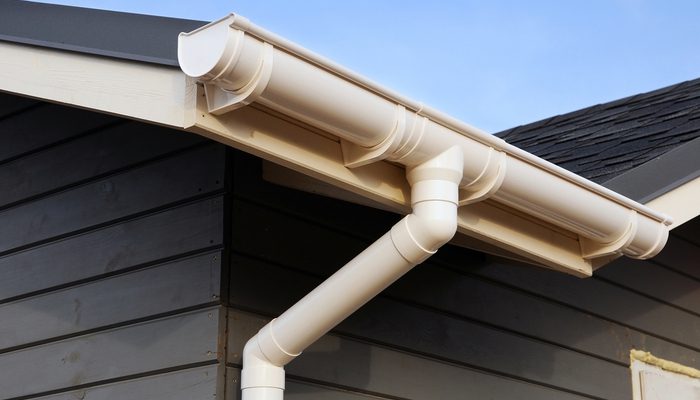House Gutter Installation: Everything You Need to Know Before You Start

When it comes to protecting your home from water damage, house gutter installation is one of the most important steps you can take. Gutters serve a critical role by directing rainwater away from your roof, siding, foundation, and landscaping. Without a well-designed gutter system, your home becomes vulnerable to mold, erosion, structural issues, and costly repairs.
Installing gutters might seem simple, but it requires careful planning, the right materials, and proper execution to perform effectively. Whether you’re building a new home or upgrading an old system, this guide will walk you through the essentials of house gutter installation—from selecting the best type to maintenance tips that ensure longevity.
Why House Gutter Installation Is Essential
Rainwater may seem harmless, but over time, it can cause serious damage to your property. Gutters prevent this by collecting water from the roof and directing it safely away from your home’s foundation. Properly installed gutters reduce the risk of:
- Basement flooding
- Foundation cracks
- Roof rot and leaks
- Damaged siding and fascia
- Soil erosion around your property
Homeowners who overlook the importance of house gutter installation often face expensive repairs later. A good gutter system not only protects your investment but also helps maintain your home’s curb appeal and resale value.
Choosing the Right Gutter Type and Material
Before starting the installation, you’ll need to decide which type of gutters are best suited for your home. The most common options include:
K-style gutters – These are the most popular for modern homes due to their decorative look and high capacity.
Half-round gutters – Typically found on older or historic homes. They have a smooth, rounded shape and are easier to clean.
Box gutters – Used on commercial buildings and some modern homes, these are built into the roof structure.
In addition to the style, selecting the right gutter material is crucial:
- Aluminum: Lightweight, rust-resistant, and cost-effective. Ideal for most climates.
- Vinyl: Affordable and easy to install, but not suited for extreme temperatures.
- Copper: Durable and visually appealing. Great for upscale homes, though more expensive.
- Steel: Strong and can handle heavy loads, but prone to rust without proper treatment.
Each material comes with its own pros and cons, so consider your climate, budget, and aesthetic preferences when making your choice.
Key Factors in House Gutter Installation
A successful house gutter installation requires more than just attaching pipes to your roof. Precision and planning are key to ensuring effective water drainage. Here are the factors to keep in mind:
- Proper Pitch: Gutters must be angled slightly to allow water to flow toward the downspouts. The general rule is a slope of ¼ inch for every 10 feet of gutter.
- Downspout Placement: Downspouts should be placed every 30–40 feet to ensure efficient drainage. Make sure they direct water away from your foundation.
- Secure Fastening: Gutters should be attached using durable hangers spaced closely enough (typically 24 to 36 inches apart) to support the weight of water and debris.
Poor planning or installation can lead to sagging, leaks, and ineffective water management, ultimately defeating the purpose of having gutters at all.
Cost of Installing Gutters
The cost of house gutter installation depends on the materials used, the size of your home, and local labor rates. Here’s a general breakdown:
- Vinyl gutters: $3 – $5 per linear foot
- Aluminum gutters: $5 – $9 per linear foot
- Steel gutters: $6 – $12 per linear foot
- Copper gutters: $15 – $25+ per linear foot
For a 150-foot gutter system, the total cost can range from $450 to over $3,000. Additional components like downspouts, gutter guards, and splash blocks can increase the overall price. While DIY installation can save on labor, it’s essential to factor in safety, tool costs, and your skill level.
Professional vs. DIY Installation
Many homeowners wonder if they should hire a professional or attempt the installation themselves. While DIY can be cost-effective, it’s not always the best choice, especially for multi-story homes or complex rooflines.
Hiring a professional ensures that:
- The gutters are installed with the correct slope and spacing
- The system is sealed properly to prevent leaks
- You receive a warranty on labor and materials
On the other hand, if your home is single-story and you’re comfortable working on a ladder, DIY installation with vinyl or sectional aluminum gutters can be a manageable project. Just be sure to follow all safety precautions and manufacturer guidelines.
Maintaining Your Gutter System
After your house gutter installation is complete, regular maintenance is essential to keep the system working effectively. Gutters should be cleaned at least twice a year—in the spring and fall—to remove leaves, twigs, and other debris. Clogged gutters can cause water to back up and overflow, leading to roof and foundation damage.
Here are a few tips to keep your gutter system in top shape:
- Install gutter guards to reduce debris buildup
- Check for loose fasteners and reseal leaking joints
- Ensure downspouts are directing water at least 3–5 feet away from your home
- Trim overhanging trees to reduce leaf buildup
Regular inspection and cleaning can extend the life of your gutter system and help you avoid unexpected repairs.
Signs It’s Time to Replace Your Gutters
Even the best gutter system won’t last forever. Over time, gutters can wear down due to weather exposure, rust, or physical damage. Common signs you may need a new gutter installation include:
- Sagging or detached gutters
- Visible cracks or holes
- Peeling paint or water stains on siding
- Persistent leaks at joints or corners
- Water pooling around your foundation
If your gutters are showing any of these signs and are over 15–20 years old, replacement might be the smartest choice for your home’s long-term protection.
Final Thoughts
A reliable and well-maintained gutter system is one of the best investments you can make as a homeowner. House gutter installation protects your home from costly water damage, enhances its appearance, and even increases its value. Whether you’re going the DIY route or hiring professionals, the key is to choose quality materials, plan carefully, and stay on top of maintenance.
Don’t wait for signs of damage to appear—taking proactive steps now can save you time, money, and stress in the future. With the right gutter system in place, your home will be better equipped to handle whatever the weather brings.




